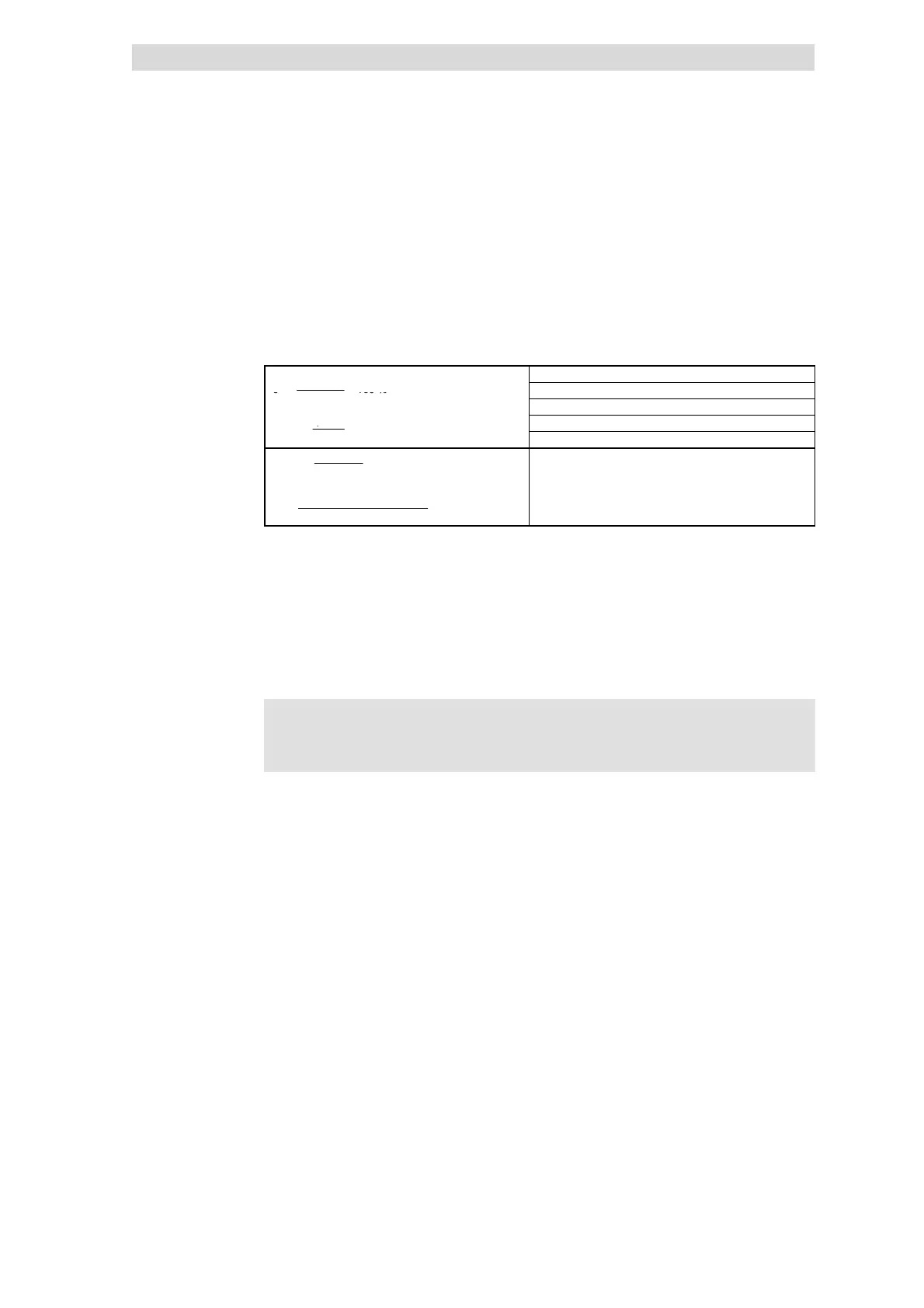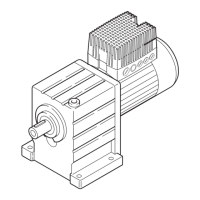Optimising the operating behaviour
Slip compensation
10
Function library
10.4
10.4.1
L
10.4-2
EDS82EV903-1.0-11/2002
The slip compensation must only be set if themotor parameteridentification isnot
carried out. For this purpose the slip compensation initially must be coarsely
adjusted on the basis of the motor data. The fine adjustment is made empirically
during operation:
Coarse adjustment
1. Coarsely detect slip compensation and enter under C0021:
−
s Slip constant (C0021) [%]
s =
n
rsyn
− n
r
⋅ 100 %
r
rsyn
Synchronous motor speed [min
-1
]
rsyn
r
r
Rated motor speed to motor nameplate [min
-1
]
=
f
r
⋅ 60
f
r
Rated motor frequency to motor nameplate [Hz]
rsyn
=
p
p No. of pole pairs (1, 2, 3, ...) of the motor
s =
1500 min
−1
−1435 min
−1
1500 min
−1
⋅ 100 % = 4.33 %
n
rsyn
=
50Hz ⋅ 60
2
= 1500 min
−1
Example fo r 4-pole motor / 1435 min
-1
/50Hz:
Preset C0021 = 4.3 %
Fine adjustment
2. Correct C0021 during operation until no load-dependent speed drop occurs
in the required speed range between idle running and maximum motor load.
The following is regarded as the standard value for the correctly adjusted
slip compensation:
– Deviation of the rated speed ≤ 0.5 % for an output frequency of 5 ... 50 Hz
(87 Hz)
– Greater deviations are possible in the field weakening range
)
))
) Note!
If C0021 is set too high, the drive can get instable.
l Set C0021 = 0.0 for speed control with internal process controller.
l Negative slip (C0021 < 0) at V/f characteristic control causes a “smoother”
drive behaviour with high load impacts or multi-motor applications.
Manual adjustment
Tip
